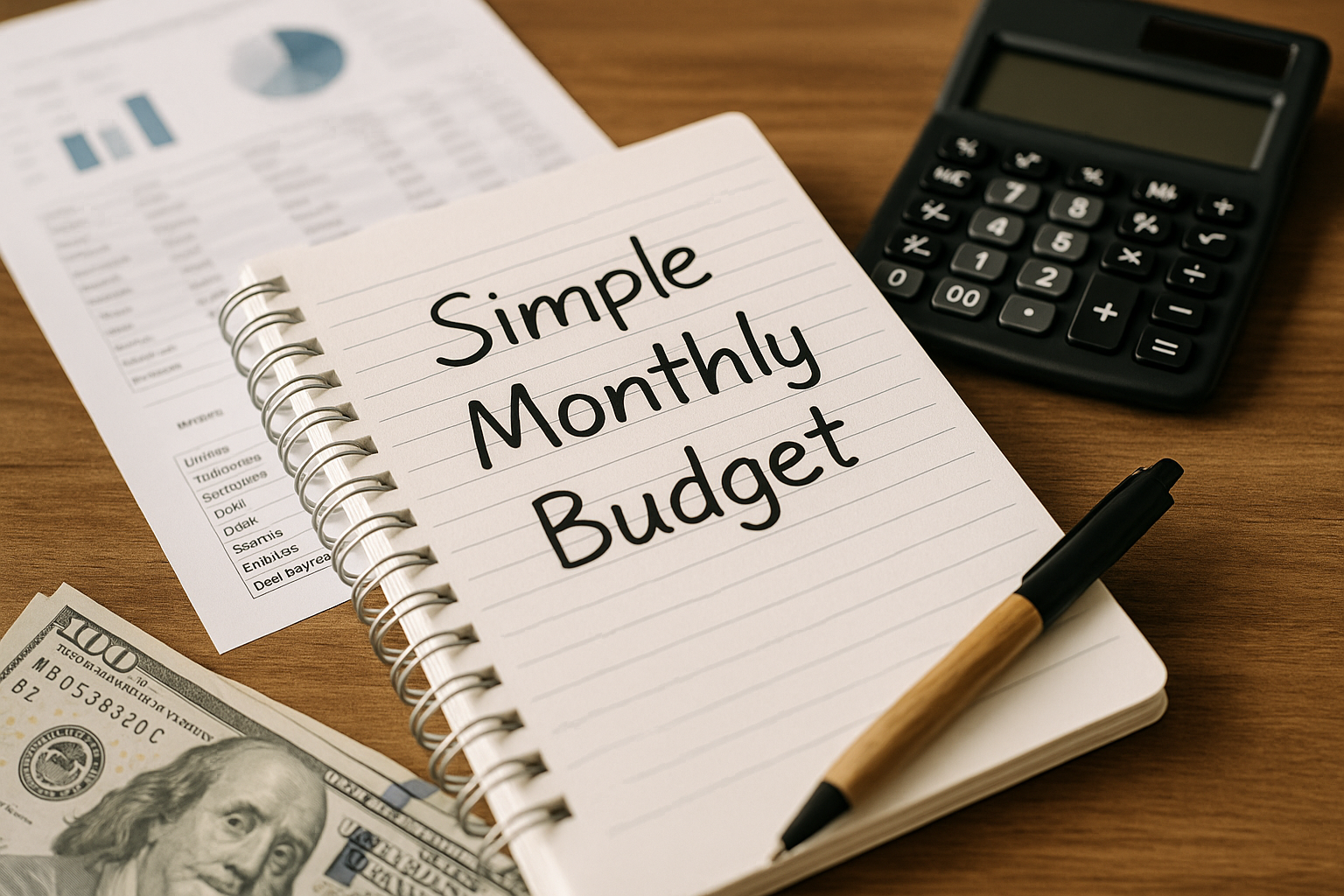Why Budgeting Matters for Beginners
Starting your financial journey can feel overwhelming, especially if you’ve never tracked your income or spending before. However, budgeting is one of the most powerful tools to help you take control of your money. It gives you a clear picture of your financial situation and helps you make smart choices about saving, spending, and investing.
For beginners, the idea of creating a budget might sound complex, but the truth is—it doesn’t have to be. With a few basic steps, you can build a monthly budget that is not only simple but also effective.
Step 1: Know Your Monthly Income
Before you can plan where your money should go, you need to know how much you’re bringing in. Start by listing all sources of income:
- Salary (after taxes)
- Freelance or side hustle income
- Rental or passive income
- Any other consistent monthly earnings
Be honest and realistic. Only include income you can count on each month.
Step 2: Track Your Spending
Most people underestimate how much they spend. That’s why tracking is key. For at least one full month, write down every single expense. You can use:
- A budgeting app
- A spreadsheet
- A notebook
Be sure to include categories like:
- Rent or mortgage
- Utilities
- Transportation
- Groceries
- Eating out
- Subscriptions
- Entertainment
- Debt payments
This gives you a clear view of your spending habits.
Step 3: Categorize Fixed vs. Variable Expenses
Once you have all your expenses listed, divide them into two groups:
- Fixed Expenses: These don’t change month to month (e.g., rent, insurance).
- Variable Expenses: These fluctuate (e.g., groceries, gas, entertainment).
This helps you understand which expenses are flexible and can be adjusted if necessary.
Step 4: Set Realistic Financial Goals
Budgeting without a goal is like driving without a destination. What do you want your money to achieve?
Examples of common beginner goals:
- Save $1,000 for an emergency fund
- Pay off a credit card
- Save for a vacation
- Start investing
Choose one or two priorities to focus on. This will guide how you allocate your money.
Step 5: Create Your Budget Plan
Now it’s time to put everything together. Here’s a simple structure to follow:
- Income: $3,000/month
- Fixed Expenses: $1,500
- Variable Expenses: $1,000
- Savings & Goals: $500
Your budget should make sure your total expenses don’t exceed your income. If they do, you’ll need to reduce variable spending or increase income.
Step 6: Use the 50/30/20 Rule (Optional)
If you’re unsure how to divide your income, a popular starting method is the 50/30/20 rule:
- 50% Needs: Rent, bills, groceries
- 30% Wants: Dining out, hobbies
- 20% Savings: Emergency fund, debt repayment, investments
This rule isn’t perfect for everyone but can serve as a useful starting point.
Step 7: Review and Adjust Monthly
A budget isn’t a one-time setup. Life changes—your income may rise or fall, and your priorities may shift. Review your budget every month and make necessary adjustments.
Ask yourself:
- Did I overspend in any area?
- Did I reach my savings goal?
- Can I cut something next month?
The more often you review, the better you’ll get at managing your finances.
Common Budgeting Mistakes to Avoid
Here are some common pitfalls that beginners often face:
- Being too strict: If your budget is too rigid, you might give up.
- Ignoring small expenses: Little purchases add up.
- Not tracking spending: You can’t fix what you don’t measure.
- Skipping savings: Always pay yourself first—even if it’s just $10.
Avoiding these mistakes will help you stay consistent and motivated.
Tools That Make Budgeting Easier
You don’t have to do this all manually. Try using one of these beginner-friendly tools:
- YNAB (You Need A Budget): Great for detailed planning
- Mint: Simple and free to use
- EveryDollar: Easy-to-use, goal-focused budgeting
- Spreadsheets (Google Sheets or Excel): Fully customizable
Choose one that fits your style and stick with it.
The Long-Term Benefits of Budgeting
When done right, budgeting can:
- Help you eliminate debt
- Build an emergency fund
- Reduce money-related stress
- Prepare you for retirement
- Support long-term wealth building
Most importantly, it gives you peace of mind, knowing that you’re in control of your financial future.
Final Thoughts: Start Small, Stay Consistent
You don’t need to be perfect. The most important part is to start and then stay consistent. Budgeting is not about limiting your life—it’s about giving yourself freedom through better control.
So grab a notebook or open an app and start building your first monthly budget today. Your future self will thank you.
